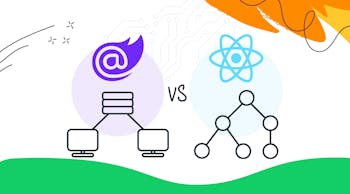Mobile technologies have grown significantly since the first appearance of the cell phone in 1973. Each year brings new challenges and trends to the mobile world, and 2021 is no different.
Below are the top ten trends in mobile technologies for 2021.
ARTIFICIAL INTELLIGENCE
When someone mentions artificial intelligence (AI), Siri or Alexa may come to mind. While these are both powerful virtual assistants that live on our devices, there is a new AI that is on the rise: chatbots. Chatbots are being used as the first line of support; instead of having to dial a phone number to speak to a customer service representative, one can enter a chat room with a chatbot to get the assistance they need. Multinational tech company Amazon takes advantage of this feature to provide quicker and more efficient customer support, and many companies will soon be quick to follow.
AUGMENTED REALITY
Daily use of augmented reality (AR) can be found in most social media apps, such as funny face filters on Snapchat, or green screen technology on Tiktok. Mobile games like PokemonGO! have also used AR to create an immersive experience that has turned quite the profit for the company. According to Statista, AR’s market worth is expected to increase by 2 million dollars this year. With this increase, it is expected that more and more companies will begin to implement AR into their devices.
DELIVERY APPS
Consumers and businesses had to adapt during peak times of the COVID pandemic, especially the food industry. Delivery services were popular before, but they have seen significant growth over the past year. This also includes grocery delivery services such as Instacart, which saw a large increase in revenue due to the pandemic.
MOBILE WALLETS
Mobile payment apps such as Paypal, Google Pay, and Apple Pay are on the rise. This increase is due to millennials and Gen Z who are the biggest users of these programs. Fisglobal reports that for the first time, cash payments have dropped below mobile wallet payments. Businesses will have to adopt these payment services in order to keep their younger audiences’ business.
FOLDABLE DEVICES
The flip phone is making a comeback, just in a different way. Android has created a smart flip phone that is becoming increasingly popular. App developers now must optimize their apps for this new screen size and screen type.
BIOMETRIC AUTHENTICATION
Many mobile devices come with a biometric authentication feature as a security measure and the number of devices that provide that security feature is growing. Phone and app developers need to consider adding a fingerprint or facial recognition to their services as an extra layer of security for their consumers.
LOCATION-BASED SERVICES
Apps like Lyft and Doordash require a location to provide their service, but now many apps that don't require a location to perform are asking for it anyway. This is a marketing tactic that companies are using so they can better market to their consumers. This marketing strategy will continue this year and more and more apps will begin to request your location.
TRANSPORTATION APPS
Uber and Lyft are well-known mobile apps for ridesharing, but the market is now moving towards more unique modes of transportation, especially in big cities. Companies like Bird and Limebike are growing and becoming more popular in cities and other areas where riding a bike or a motorized scooter is an easier way to get around.
5G TECHNOLOGY
5G is the new wave of wireless technology systems. Studies show that it is faster, cheaper, and more reliable than 4g. What takes minutes to download with 4g will take only seconds with 5g. This means faster download speeds and will allow consumers to consume more media, faster.
MOBILE SECURITY
The need for mobile security grows each year as more consumers shop and pay with their mobile devices. App developers will see a lack of mobile security and move to fill that void. Expect a wave of mobile security apps and features to come to mobile devices this year.
Keep an eye out for these trends and make sure your business stays on top of them!









